全文HTML
--> --> -->在过去的研究中, 许多****针对聚合物太阳电池中的载流子复合和能量无序进行过系统研究. 如Proctor等[10]研究了基于吡咯并吡咯烷酮的有机小分子太阳电池器件, 利用变光强电流密度-电压曲线分析了器件中的非孪生载流子复合过程; Cowan等[9]利用瞬态光电导技术探讨了载流子在器件内建电场作用下的抽取与复合损失之间的竞争性关系, 并获取了载流子寿命等重要参数; Credgington等[14]通过改变器件制备条件、电极结构、活性层厚度以及器件极性等关键条件研究了电池的开路电压与载流子复合损失之间的联系. 关于能量无序对聚合物太阳电池器件性能的影响, 近年来也取得了一定的研究进展. 如Blakesley和Neher[15]从理论上证明了能量无序将会引起器件开路电压的严重损失; Gao等[16]发现将溶剂添加剂加入PBDTTT-C-T:PC71BM体系后可以减少共混物的能量无序度, 3% DIO的加入使高斯无序分布宽度由90 meV降低到75 meV; Heumueller等[17]通过实验证明, 态密度分布变宽将会直接降低器件的开路电压; Xie等[18]的研究成果表明降低活性层的能量无序度有利于优化载流子的传输行为以及电荷转移态能量, 进而提升器件性能.
本文以共轭聚合物材料PTB7-Th为电子给体[19], 分别以富勒烯衍生物PC71BM和稠环类n型材料O-IDTBR为电子受体[20], 制备了高性能聚合物太阳电池器件. 为了探究基于富勒烯与非富勒烯受体的电池器件的开路电压理论值, 首先对两种器件的开路电压进行了温度依赖性测试. 随后, Mott-Schottky测试被用于评估两种器件内建电场的大小. 交流阻抗技术和瞬态光电压技术被用于研究不同器件中载流子的复合损失情况. 此外, 电池器件的电致发光光谱被用于分析器件的能量无序性以及对开路电压的影响.
2.1.材 料
ITO玻璃购自芜湖晶辉电子科技有限公司, 其方块电阻为15 Ω/□. 氧化锌(ZnO)电子传输层材料采用溶胶-凝胶法制备: 称取二水醋酸锌固体1 g, 加入277 μL的乙醇胺与10 ml的乙二醇单甲醚, 随后60 oC加热搅拌12 h备用. 聚电解质材料PFN购买于上海竹星光电材料经营部. 给体材料PTB7-Th、受体材料PC71BM购自Solenne BV公司, O-IDTBR根据参考文献[20]合成, 空穴传输材料MoO3购自Merck公司. 实验中所涉及的所有材料均未经纯化直接使用.2
2.2.器件制备
器件的结构为ITO/ZnO/PFN/活性层/MoO3/Ag. 首先, 将预先图案化的ITO导电玻璃依次放在丙酮、含有表面活性剂的去离子水、去离子水及异丙醇中各超声清洗10—15 min. 烘干后基板表面先旋涂一层30 nm厚的ZnO作为电子传输层并在空气中200 oC加热处理1 h. 紧接着在氮气手套箱中旋涂一层5 nm左右的PFN薄膜, 随后在其上面制备PTB7-Th:PC71BM及PTB7-Th:O-IDTBR光活性层. 刮好电极后将薄膜转移至蒸镀腔, 在高真空下(腔室压力小于10–4 Pa)依次蒸镀10 nm的MoO3和70 nm的金属银.2
2.3.测试与表征
电池器件的电流密度-电压曲线利用太阳光模拟器(SAN-EI, XES-40 S2-CE)在100 mW/cm2的光强下测试得到, 数据利用编程的keithley2450源表记录. 在进行低温测量时, 液氮低温恒温器(美国Janis ST-100)被用于提供低温环境. 交流阻抗数据和Mott-Schottky曲线利用阻抗分析仪获得(是德科技E4990A). 瞬态光电压衰减曲线由PAIOS瞬态光电流信号测试系统测量. 电致发光光谱采用AvaSpec-ULS2048多用途光纤光谱仪测量得到.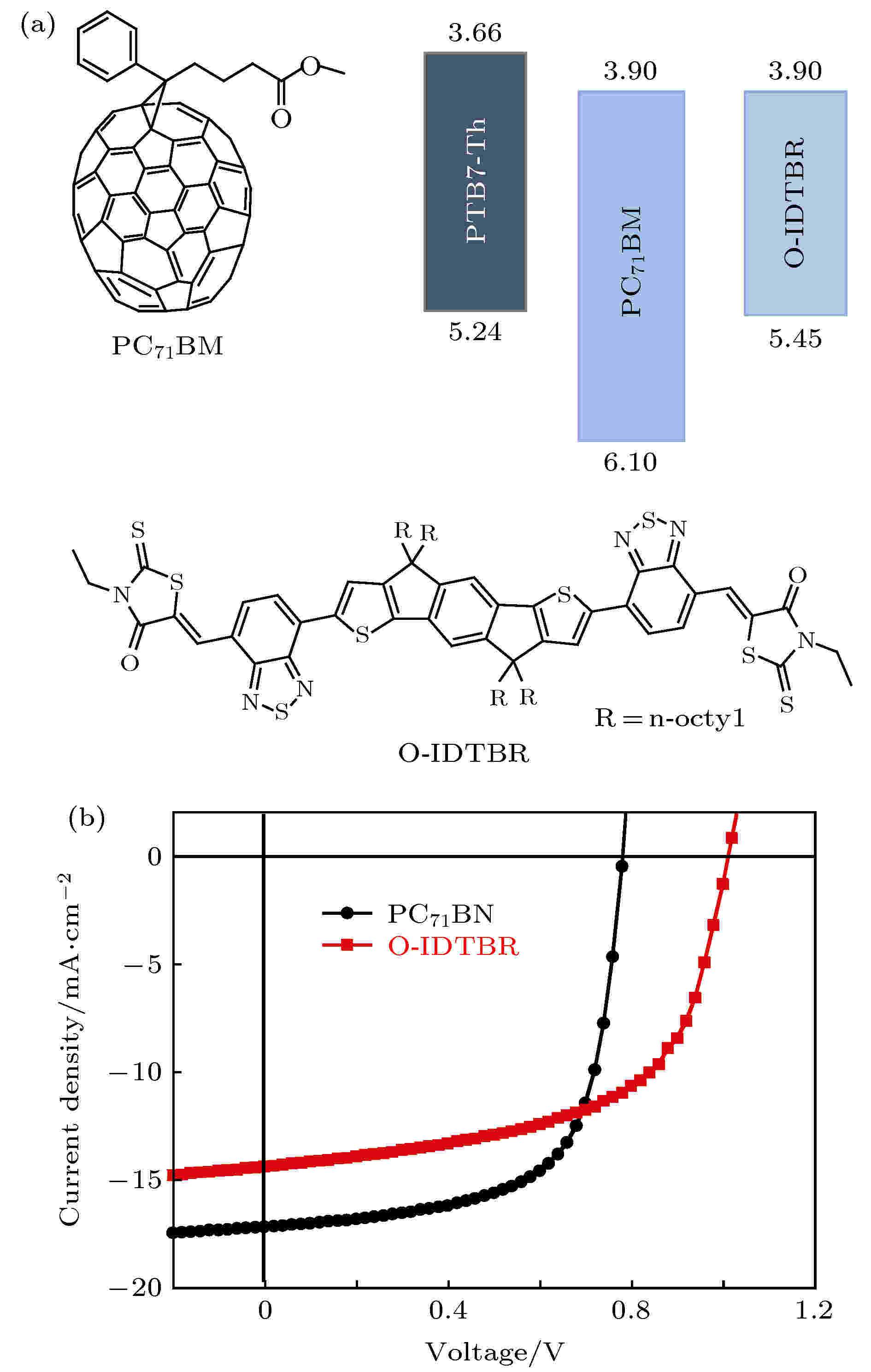 图 1 (a)电子受体材料PC71BM与O-IDTBR的化学结构式及光活性层材料的能级示意图; (b)基于PC71BM和O-IDTBR的电流密度-电压曲线
图 1 (a)电子受体材料PC71BM与O-IDTBR的化学结构式及光活性层材料的能级示意图; (b)基于PC71BM和O-IDTBR的电流密度-电压曲线Figure1. (a) Chemical structures of PC71BM、O-IDTBR and their energy level diagrams; (b) Current density-Voltage curves of the PC71BM and O-IDTBR based devices.
图1(b)展示的是实验测得的基于PC71BM和O-IDTBR作为电子受体的聚合物太阳电池的典型电流密度-电压曲线. 在100 mW/cm2光强的照射下, PC71BM器件的短路电流密度(Jsc)、填充因子(FF)、开路电压(Voc)以及能量转换效率(PCE)分别为17.35 mA/cm2, 65.30%, 0.79 V及8.95%. 与之不同的是, O-IDTBR器件在同样条件下的Jsc, FF, Voc及PCE分别为14.24 mA/cm2, 61.40%, 1.01 V及8.83%. 从以上参数可以看出, 两者的能量转换效率接近, 但是短路电流密度和开路电压却有着明显的区别. 由于本文的重点在于讨论器件的开路电压, 造成短路电流密度大小不一的原因不展开详细讨论(主要原因在于两者活性层在短波长处的吸收不同, 详见附加信息S1).
前文已提及, 因PC71BM和O-IDTBR两种受体材料具有相同的LUMO能级, 在给体材料相同的情况下基于以上两种受体的光伏器件应该具有相同的开路电压. 然而, 实验测得的PC71BM器件的Voc仅为0.79 V, 而O-IDTBR器件的Voc则高达1.01 V. 为了弄清造成这一巨大差别的原因, 我们首先测量了两种典型器件在不同温度下的开路电压, 结果如图2(a)所示. 从图中可以看出, 随着温度从300 K降低到120 K, 两种器件的开路电压均出现较大增长, 表明器件中载流子的复合过程受到了抑制[22]. 将Voc-Temperature曲线进行线性拟合并外推至0 K可以得到电荷转移态能量(ECT), 即开路电压的最大值. 根据曲线在纵轴的截距, PC71BM和O-IDTBR器件的开路电压最大值分别为1.13和1.34 V. 此结果表明, 300 K下PC71BM和O-IDTBR器件相比于0 K条件下开路电压分别损失了0.34和0.33 V, 非常接近. 更进一步地, 我们利用Mott- Schottky关系[23]计算了两种器件中的内建电场:
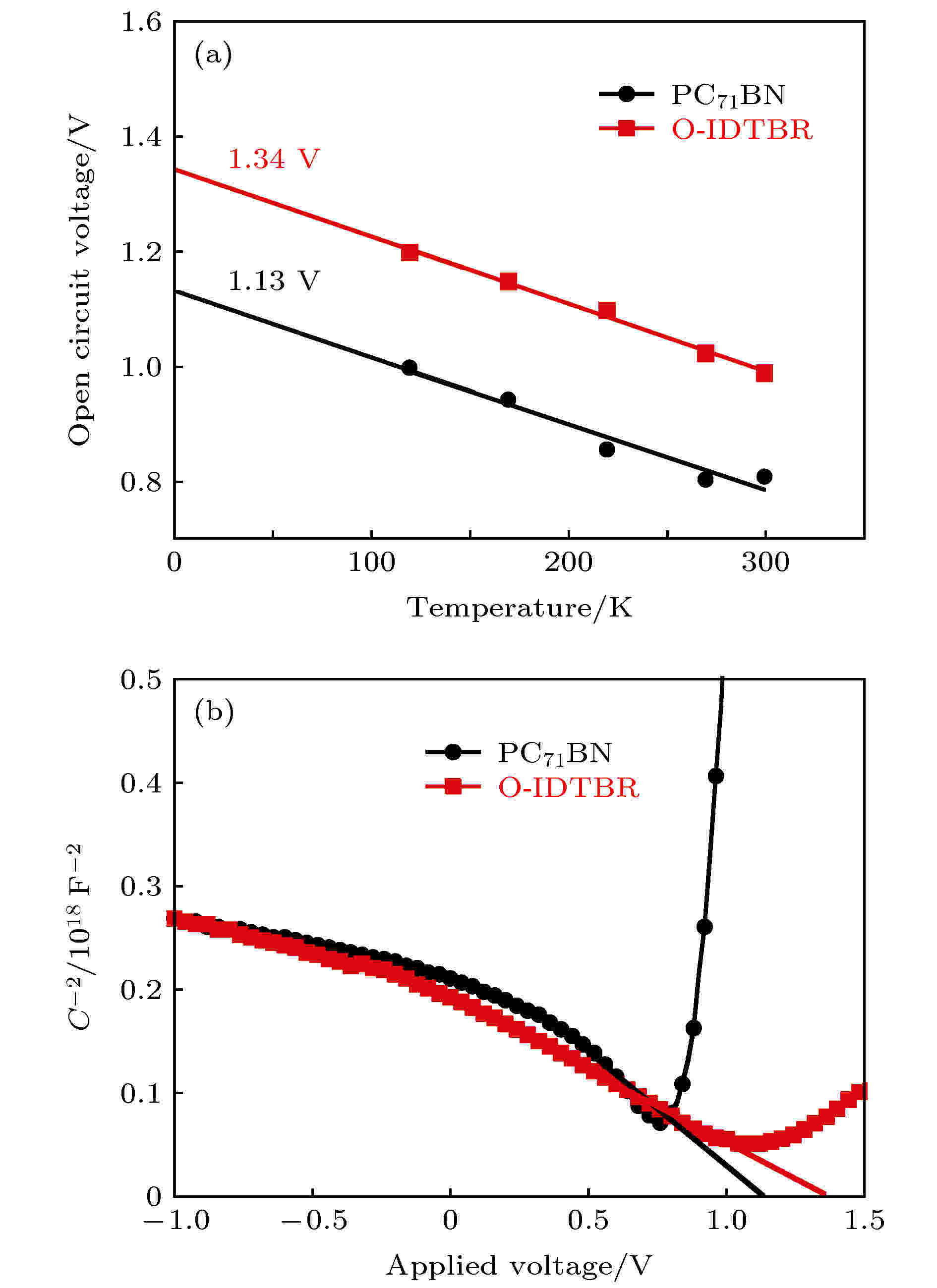 图 2 (a) 两种器件的开路电压随温度变化的曲线; (b)两种器件的Mott-Schottky曲线
图 2 (a) 两种器件的开路电压随温度变化的曲线; (b)两种器件的Mott-Schottky曲线Figure2. (a) Voc-Temperature curves of the devices using different electron acceptors; (b) Mott- Schottky curves for the devices.
交流阻抗技术是研究聚合物太阳电池载流子复合过程的一种有效手段[24,25]. 图3(a)为从两种器件的交流阻抗谱(详见附加信息S2)提取出的器件的复合电阻随光照强度的变化曲线. 图3(a)中的插图为拟合电路, 其中Rs为器件的串联电阻, Rtrans为载流子的传输电阻, Cg为器件的几何电容, Cc和Rrec分别为器件的化学电容和复合电阻. 从图中可以看出, 器件在低光强下均具有较大的复合电阻, 原因在于低光强照射下器件中的光生载流子数目较少, 降低了具有相反电荷载流子相遇复合损失的概率. 在测量光强范围内, O-IDTBR器件的复合电阻值普遍高于PC71BM器件, 暗示了PC71BM器件中载流子复合程度更为严重. 这一推断可以进一步被瞬态光电压实验证实. 如图3(b)所示, 在瞬态光电压衰减曲线中, PC71BM更快地从电压最大值衰减到0, 表明该器件中的光生载流子具有较短的寿命, 也就意味着更多电荷通过复合损失了.
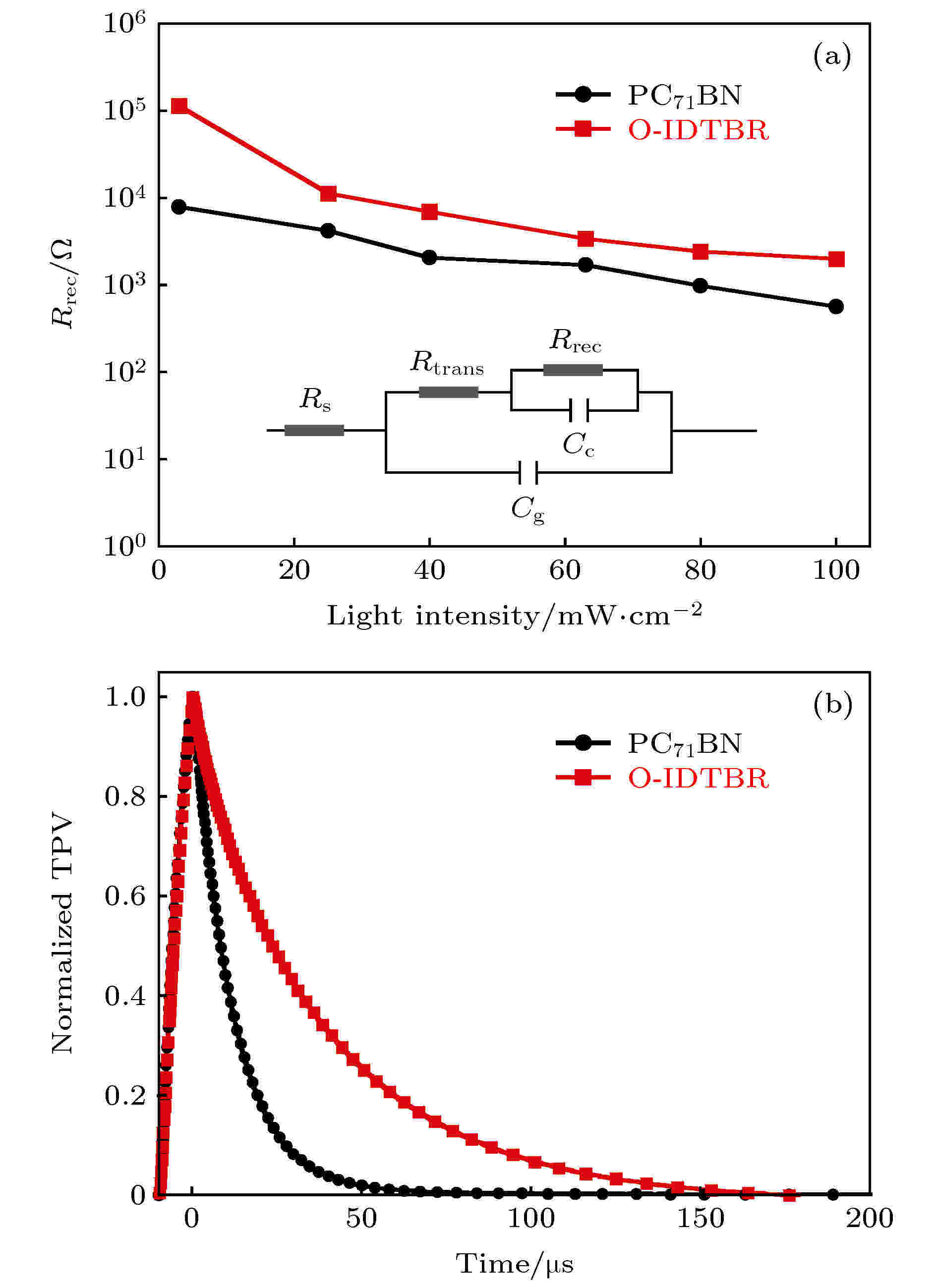 图 3 (a) 器件的复合电阻随光照强度的变化曲线, 插图: 阻抗谱的等效拟合电路; (b)器件的瞬态光电压曲线
图 3 (a) 器件的复合电阻随光照强度的变化曲线, 插图: 阻抗谱的等效拟合电路; (b)器件的瞬态光电压曲线Figure3. (a) Recombination resistance as a function of the light intensities, inset: Equivalent circuit of the measured impedance spectrum; (b) transient photovoltage curves of the devices.
为进一步研究两种不同器件的区别, 我们对其进行了电致发光光谱测试. 图4(a)和图4(b)分别为PC71BM器件和O-IDTBR器件在30—110 mA下的电致发光光谱. 从图中可以看出, 两种器件在近红外区都出现了明显的激发态发光峰. 对于PC71BM器件, 随着注入电流的逐渐增加, 其发光峰向着短波长方向(高能量方向)逐渐移动. 与之明显不同的是, 基于O-IDTBR的器件的发光峰尽管也有位移, 但可以忽略不计. 另一方面, PC71BM器件的发光峰宽于O-IDTBR器件的发光峰, 说明前者的激发态能级分布要宽于后者. 考虑到电致发光峰向短波方向移动是由于器件内的能量无序造成的[16]. 我们认为O-IDTBR器件相比于PC71BM器件具有更高的能量有序性.
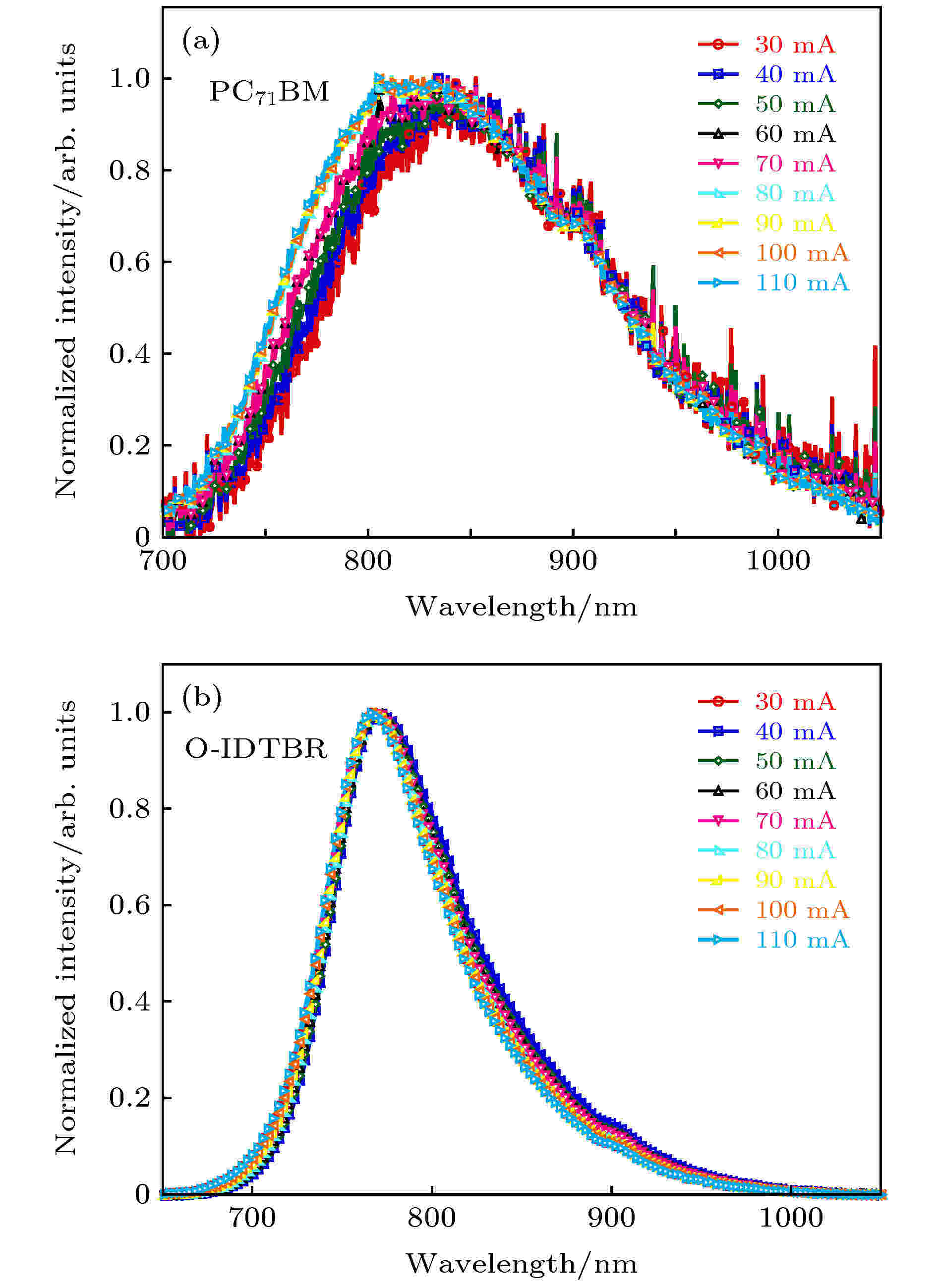 图 4 (a) PC71BM与 (b) O-IDTBR器件在不同注入电流下的电致发光光谱
图 4 (a) PC71BM与 (b) O-IDTBR器件在不同注入电流下的电致发光光谱Figure4. Electroluminescence of the (a) PC71BM and (b) O-IDTBR based devices with various injection current.
根据以上分析, PC71BM器件中的荧光发射来源于其分布较宽的激发态电子的辐射跃迁, 而O-IDTBR器件因光谱宽度较窄, 且随电流变化较小, 其激发态能量分布相对均一, 如图5(a)所示. 由此可以知道, 在PC71BM器件中, 受体材料的LUMO能级无序度较高(其高斯分布宽度σn1较大). 相比之下, O-IDTBR的LUMO能级分布更窄(σn2较小), 导致O-IDTBR器件的开路电压Voc2大于PC71BM器件的开路电压Voc1, 如图5(b)所示.
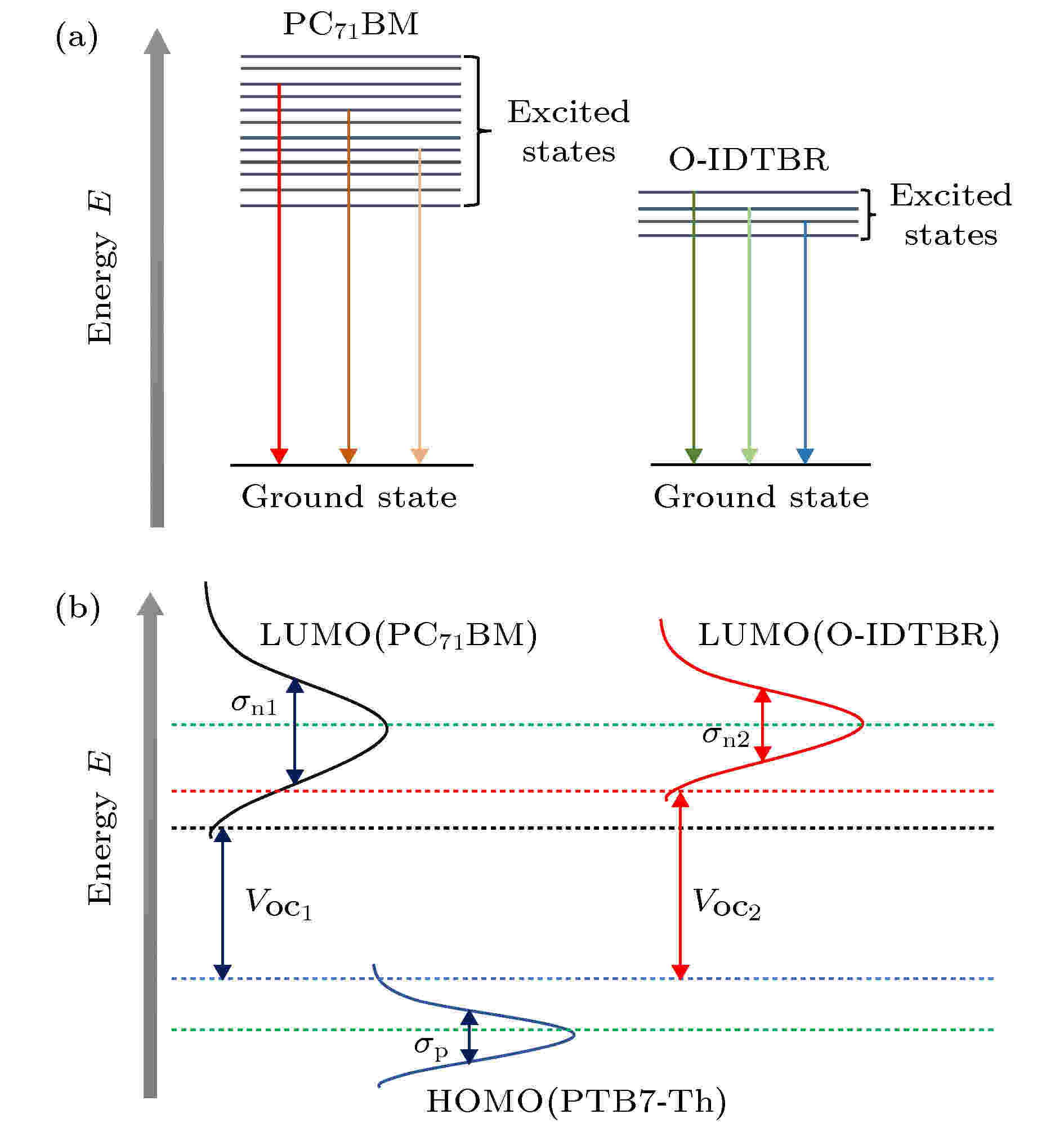 图 5 (a) PC71BM器件与O-IDTBR器件的电致荧光发射过程示意图; (b)能量无序对开路电压的影响示意图
图 5 (a) PC71BM器件与O-IDTBR器件的电致荧光发射过程示意图; (b)能量无序对开路电压的影响示意图Figure5. (a) Illustration of the fluorescence emission process in the polymer solar cells; (b) illustration of the impact of energy disorder on the open-circuit voltage.
